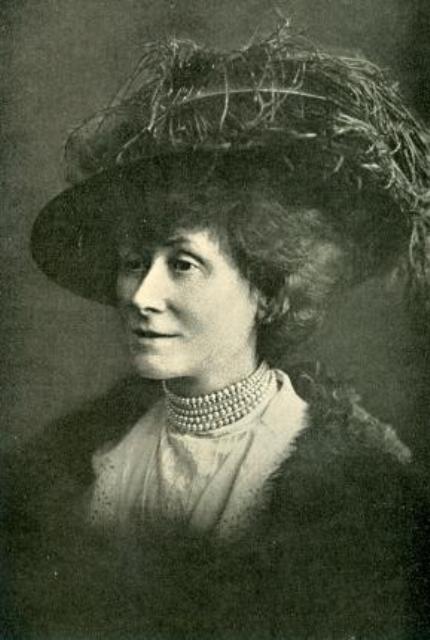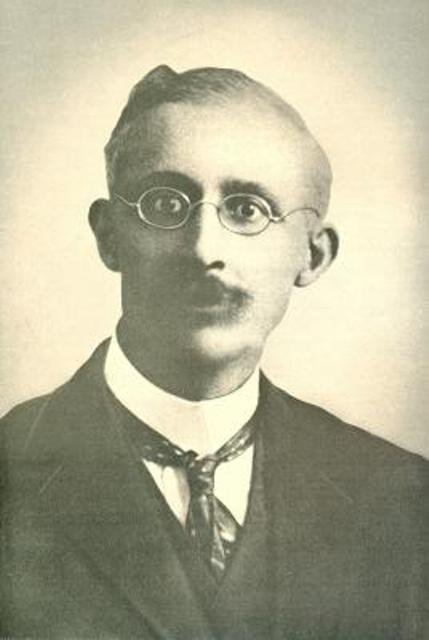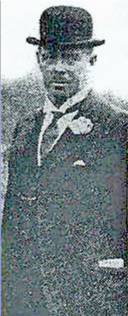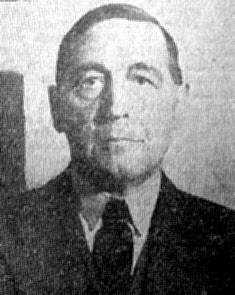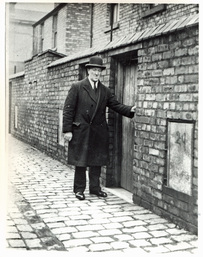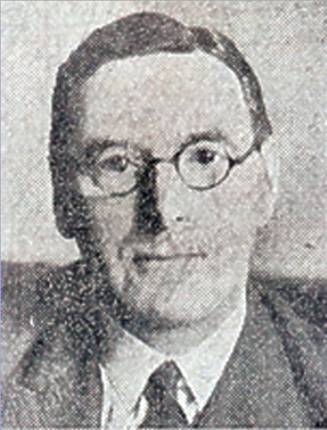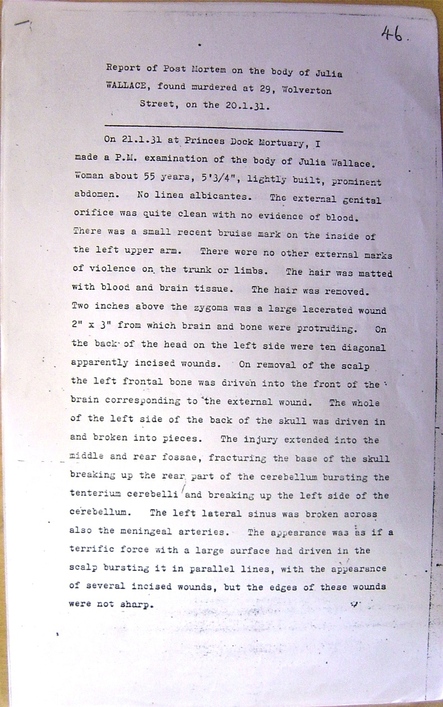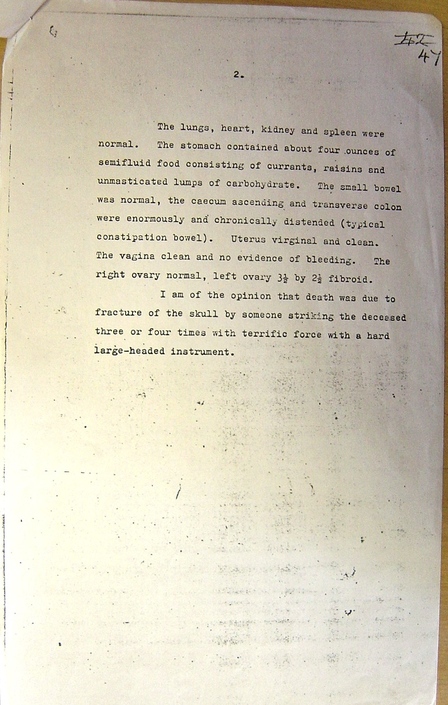JULIA WALLACE MURDER by mark russell, local historian
On 20th January 1931 the city of Liverpool witnessed one of the most gruesome and baffling of murders. The pattern of events was triggered the previous evening when a telephone message had been left for insurance agent William Herbert Wallace at the Liverpool Central Chess Club, of which, he was a member. It involved an appointment with a potential client in the nature of business. The caller gave his name ‘R.M. Qualtrough’ and left instructions for Wallace to call at his address ’25 Menlove Gardens East’ at 7.30 the following evening. Club Captain Samuel Beattie took the details down and conveyed them to Wallace who arrived at the club about 20 minutes after the message had been left for him.
On the evening of the murder Wallace left his home in Anfield at about 6.45pm and took three trams to Allerton. After searching the Menlove area and asking several people it appeared that there was a Menlove Gardens North, South and West, but no East. Wallace returned home to find his wife Julia brutally murdered in the front parlour of their home in Wolverton Street.
During the investigation the police ascertained that the anonymous caller had used a call-box on the corner of Rochester Road and Breck Road – 400 yards from 29 Wolverton Street. They were convinced that the whole thing had been an elaborate plan by Wallace to murder his wife. They set to determine the time that Wallace had in committing the murder by conducting a series of tram tests.
Monday 26th January saw the first set of tests. They were conducted to determine the time Wallace could have left home in order to get the tram at the fixed point of time; namely Smithdown Lane at 7.06pm. According to the working timetable of the Liverpool Corporation Tramways, the time allowed a tramcar from St Margaret’s Church to Smithdown Road was 12 minutes. The three sets of Police Officers left at different times. They took the exact route Wallace said he took on the evening of the 20th January. The first pair assigned was Assistant Prosecuting Solicitor J.R. Bishop and Inspector Herbert Gold. They left from the back of 29 Wolverton Street at 6.45 and reached the destination of Smithdown Lane at 7.04. The time taken was 19 minutes.
The next to go were Sergeants Harry Bailey and A.W. Fothergill. They left at 6.49pm. They took the same route but boarded a tram at the request stop 50 yards to the right of Castlewood Road at 6.52. This was the same tram Bishop and Gold boarded at the corner. The tram reached its destination (as above) at 7.04pm. Time taken: 15 minutes.
Detective Constables William Brown Gilroy and Christie set off at 6.53pm. They walked to the tram stop at the corner by St Margaret’s Church and boarded the number 26 tram at 6.57. They alighted at the corner of Tunnel Road and arrived at Smithdown Lane tram stop at 7.10. It had taken them 17 minutes.
The tests continued on the Tuesday evening: at 6.45 Sergeant A.W. Fothergill and Detective Constable 95E William Prendergast set off from the back of Wolverton Street. They made their way to the corner of St Margaret’s Church, Belmont Road, and after a two minute wait boarded the number 26 tram at 6.52 before finally reaching the destination of Smithdown Lane at 7.03. The time took them 18 minutes.
Detective Sergeant 120H James Reginald Hill and Detective Constable 431H William Brown Gilroy were the next to go. They left at 6.49 and jumped on a tram at the corner of Castlewood Road at 6.52. They alighted at the junction of Tunnel Road and Earle Road and walked over to Smithdown Lane tram stop, reaching the destination at 7.06. Time taken: 17 minutes.
Detective Sergeant Harry Bailey and Constable 409H Walter Stanley Oliver were the final pair. They left at 6.53pm, walked to St Margaret’s Church and after a two minute wait, boarded the number 26 tram at 7pm. They reached the destination at 7.13pm. Time: 20 minutes.
Detective Superintendent Hubert Moore and the CID calculated that the average time was between 17-20 minutes, meaning that Wallace could have left the house as late as 6.49pm. Coupled with the estimated time that the milk boy Alan Close spoke to Mrs Wallace – 6.30 – 6.35, they believed Wallace had time enough to commit the murder.
After thirteen days Wallace was arrested. Detective Inspector Herbert Gold, accompanied by Superintendent Thomas and Detective Superintendent Hubert Moore, arrived at Wallace’s temporary abode – 83 Ullet Road – and issued the warrant for his arrest.
Wallace appeared at the Police Court (now Magistrates’ Court) and was committed for trial at the Spring Assizes. There, he was found guilty and sentenced to death but was released after the Court of Criminal Appeal deemed that the verdict could not be supported with regard to the evidence. Wallace died of uraemia and pyelonephritis at Clatterbridge hospital on 26th February 1933 and was buried with his wife in Anfield Cemetery.
Mark Russell
The Investigation Team
Pathologist Report


